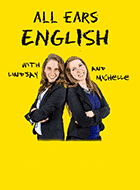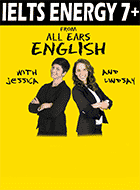Are resumes the same in every English-speaking country?
What to include in your resume is vital to know when you’re applying for a job.
In today’s podcast, Lindsay interviews Pete Smissen from Aussie English.
He will share three tips to get your resume ready for the business world in Australia.
You’ll also learn a bonus tip on key spelling differences between Australia and the U.S.
Pete’s language expertise
Pete Smissen is the creator and host of the Aussie English podcast and YouTube channel.
In today’s episode, Pete will share how you can make a resume for jobs in Australia.
He didn’t have a lot of jobs before doing podcasts.
However, he did get to send out resumes for non-corporate jobs.
He has a Ph.D. in Biology but didn’t pursue this as a career.
Pete’s path to teaching Australian English
Pete became interested in fitness and mixed martial arts.
He met people who spoke many different languages when he frequented the gym.
These individuals inspired him to learn another language because he only knew how to speak English.
He took up French and kept practicing by talking to his French friends at the gym.
They were impressed with how fast he was learning and asked how he did it.
They were interested in improving their English.
He shared that he constantly listened to podcasts.
At the time there were no podcasts for learning Australian English.
He started one and has made a career out of it.
He preferred helping people with Aussie English than pursuing his career in Biology.
Aussie resumes
Pete has been a guest in a couple of All Ears English episodes.
You can visit these episodes to hear more from him.
AEE 1805: 3 Tips for Life in Australia with Pete Smissen from Aussie English Podcast
AEE 1366: Aussie English Slang Words with Pete Smissen
Today he shares three tips on how to prepare a resume suited for jobs in Australia:
#1: Prepare a succinct cover letter
In some countries, people usually put a photo of themselves in their resume.
In Australia, resumes don’t have a photo.
Instead, the first page should be a cover letter.
A good cover letter should be customized to the job you are applying for.
You must put the skills you have that will be valuable to your employer.
Don’t make a general cover letter for all the jobs you are applying for.
Read the job description and match your cover letter to what they are looking for.
Additionally, explain why you would be the best fit for the job.
#2: Use formal grammar
Since this is a resume, you need to make sure you use formal language.
You can use tools like Grammarly to check the grammar and spelling of your resume.
Additionally, ask friends and family to proofread for you.
You can also utilize google and find templates you can use as a guideline to structure your resume.
You must use standard English, especially if you’re applying for a job that requires you to be good at English.
In many situations, you don’t have to worry as much about grammar, but this isn’t one of them!
#3: Make your resume concise and to the point
Resumes are for you to get your foot in the door for an interview.
You don’t want to put everything in your resume, especially if it is not relevant to the job you are applying for.
Instead, include experiences relevant to the job you’re applying for.
The person reviewing your resume needs to see you have the potential to do the job.
You want to interest them enough so that they would want to interview you and learn more about you.
Don’t waffle on in your resume.
- waffle on: share unimportant details at length
It is vital that you just put in the important points that will make a good impression.
What is the goal?
Your goal is to get an interview when you submit your resume.
The impression you make is key.
Hiring managers only take a few seconds to glance at each resume.
If you don’t stand out, they’ll move on to the next one.
Follow these tips to separate yourself from other candidates.
Aussie spelling versus American spelling
Aussie spelling is quite different from American spelling.
In some cases, it’s not important.
However, if you’re applying for a job in Australia, you should use Aussie spelling.
This will make your cover letter and resume more native and will help you avoid looking like a foreigner.
Again, you can use tools to guide you and do a spell check adjusted to Australian English.
There is no shame in getting help to do this.
Here are some pointers about Aussie English:
#1: Double consonants
Australian spelling often doesn’t use double consonants.
American English, on the other hand, does.
Example:
Australian English: fulfil, enrol
American English: fulfill, enroll
#2: Words that sound the same but are spelled differently
Many words are spelled with a ‘c’ in Australian and British English, but with an ‘s’ in American English.
Example:
Australian English: defence, offence
American English: defense, offense
Some speakers will pronounce these words differently as well.
In American English, the word ‘defense’ is pronounced differently depending on the context.
#3: Additional vowels
American English often eliminates vowels that are present in Australian English.
Example:
Australian English: colour, flavour
American English: color, flavor
#4: Day first on dates
In Australia and in many countries, the day is written first on a date.
The month comes before the day in American English.
Example:
Australian English: 19 July 2020
American English: July 19, 2020
Takeaway
It is really important to learn how to localize your resume.
Just like language, there will be differences in what is expected in different countries.
Take note of the tips shared in today’s episode by Pete Smissen so you can land the job you want in Australia.
For more resources and information from Pete, find him online at Aussie English.
You can also find Aussie English on all social media platforms and YouTube for videos and content that can help in learning about Australian English.
Are you looking to work in Australia?
We’d love to hear your stories and see how we can help in the comments below.








